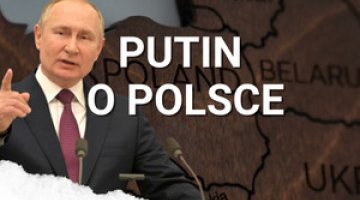Russia on the missile shield – no prospects for agreement
On 8 June, a meeting of the NATO-Russia Council was held at the level of defence ministers, which was primarily devoted to issues of potential cooperation in constructing a missile defence (MD) system in Europe. The talks did not bring about any rapprochement in the existing discrepancies between both sides, and reaffirmed the impasse in their relations which has lasted since last year’s Russia-NATO summit in Lisbon. Regardless of whether Russia decides to escalate the political dispute over the shield, or whether it adopts the tactic of prolonging the negotiations, the chances of modifying the shape of the MD system or preventing the deployment of its components in Central and Eastern Europe are limited.
The parties’ positions
The NATO summit in Lisbon did not finalise the form of the Alliance’s missile defence system. That will be developed on the basis of elements of the US missile shield to be deployed in Europe, which will then be complemented by MD systems from NATO’s European countries. The current approach involves replacing the fixed missile launchers with the mobile, land- and sea-based SM-3 and Aegis systems. The Alliance invited Russia to dialogue on developing the missile defence system, and during the meeting of the NATO-Russia Council in November 2010, the parties agreed to begin talks on possible opportunities for cooperation on missile defence in Europe.
Russia, which de facto opposes the construction of the American system in Europe, has adopted the tactic of questioning the merits of constructing the MD system in its current form. It has made its possible cooperation conditional on being given a say in the form and functioning of the system, supported by binding legal provisions. It also hopes that its opposition will bring about more criticism of the US’s military policy in Europe from within NATO. Moscow’s demand is that, based on the provisions of international agreements, it should be given security guarantees stating that the missile shield will not serve to weaken the Russian Federation’s nuclear potential. Reaching agreement has been complicated by the Russian proposal to create a system of so-called sectoral missile defence, according to which Russia's missile defence would be responsible for the defence of NATO territory from the east.
Russia's tactics are being hindered by American activities, including Washington gaining formal support from its NATO allies for a new concept of the missile shield, as well as the conclusion of military agreements with Poland and Romania. These agreements provide for the deployment of the MD components in 2015 (in Romania) and 2018 (in Poland). Talks with Bulgaria are also underway. In response, Russia has declared that implementing the MD program poses a threat to its national security, and will force it to continue to expand and modernise its own military infrastructure.
Different strategic visions
The root of the dispute between Russia and NATO lies in their different approaches to the issue of strategic balance. The United States is aiming to achieve superiority in the field of weapons of mass destruction (WMD); in the longer term, the consequence of the missile shield will be to neutralise the advantage another state might have in possessing such weapons. Washington has rejected the Cold War doctrine of mutually assured destruction, according to which the then superpowers refrained from deployment of missile defence systems. At the same time, the United States is seeking to prevent the possibility that its ability to take military action would be constrained by nuclear deterrents from other countries.
Russia has protested against the US’s plans for the missile shield for two reasons. For the Russian ruling elite, the situation of strategic balance (understood as mutually assured destruction) is both a guarantee of national security in relation to other nuclear states, and a source of national prestige. Moscow cannot compare to the United States in the technological development of MD systems. As a result, Russia is attempting to convince the US to abandon the construction of missile defence systems, or limit it to such an extent that they would not be able to neutralise Russia's nuclear arsenal.
At the same time, the strategic goal of the Russian foreign policy is to prevent or impede the deployment of US missile defence components in the countries of Central and Eastern Europe. Moscow still sees the region as its own sphere of privileged security interests, and is working to reduce the Western (particularly the American) military presence there.
Prospects
In the current situation, it seems unlikely that Russia and NATO will reach any agreement on missile defence. In these conditions, we can expect Russia to take two kinds of action: political and military.
In the political field, we should describe two possible scenarios for Russian behaviour towards the US and NATO, in the absence of any agreement on cooperation over the missile shield. In the first scenario, Moscow will decide to escalate political tensions, putting a kind of ultimatum to the United States: either an agreement on the missile shield, or a return to a tense relationship which would indicate the failure of the ‘reset’ policy. However, in this case Russia's room for manoeuvre would still be limited. It would be difficult to withdraw from sanctions against Iran; and exiting the new START treaty would do most harm to Russia itself, and would undermine its equal status with the US in the realm of strategic stability. Moscow could, however, limit logistical (transit) support to US forces in Afghanistan. In the second scenario, one could envisage the negotiations being de facto extended, with Moscow counting on a delay in constructing the shield. In practice, this would amount to Russia temporarily abandoning its use of the MD issue as a main ‘bone of contention’ in its relations with the West and the United States.
Whichever option they pursue, Moscow's hopes of halting work on the US missile defence system remain limited. The political climate in transatlantic relations has also changed, in comparison to the presidency of George W. Bush. It will be much harder for Russia to play the anti-American card in Europe and build up tension on the ‘Old Continent’. Furthermore, if tensions in relations with the US escalate, it will be difficult for Moscow to shift responsibility for the deterioration of security in the region onto Washington.
Regardless of the political scenario, Russia’s work on constructing ballistic missiles capable of breaking through missile defence is expected to continue and intensify (this is the purpose of the Bulava ballistic missile, equipped with manoeuvring warheads, which has been in development for the last decade). At the same time, Russia will be unable to respond to US actions by building its own missile defence system in the next few years because of the technology gap between the two sides. We may also assume that in case of such a protracted deadlock, Russia will deploy short-range missiles near the borders of NATO member states.





